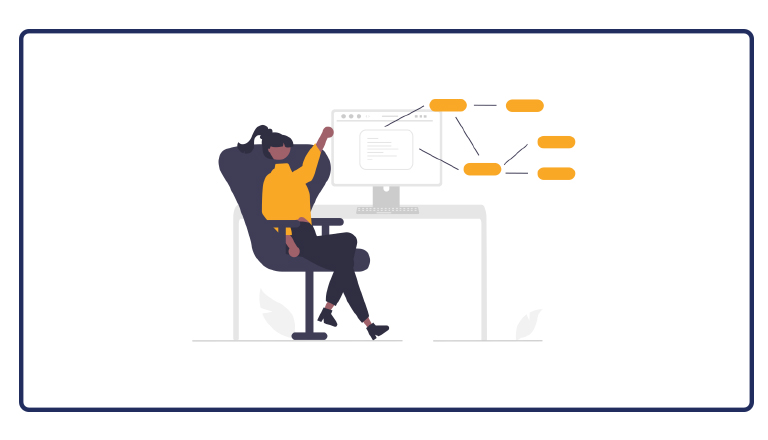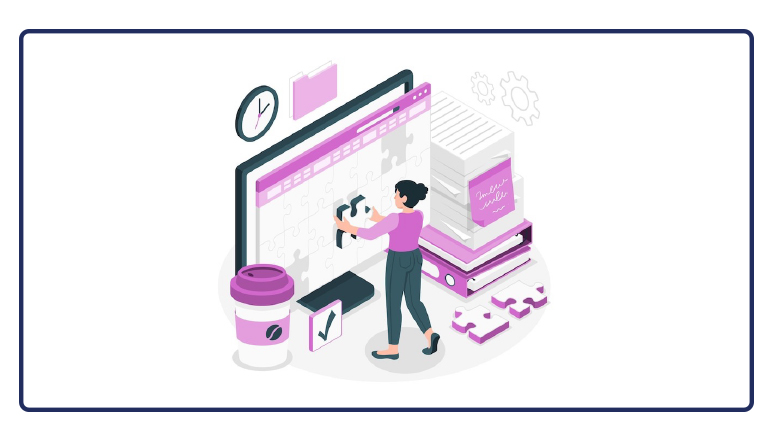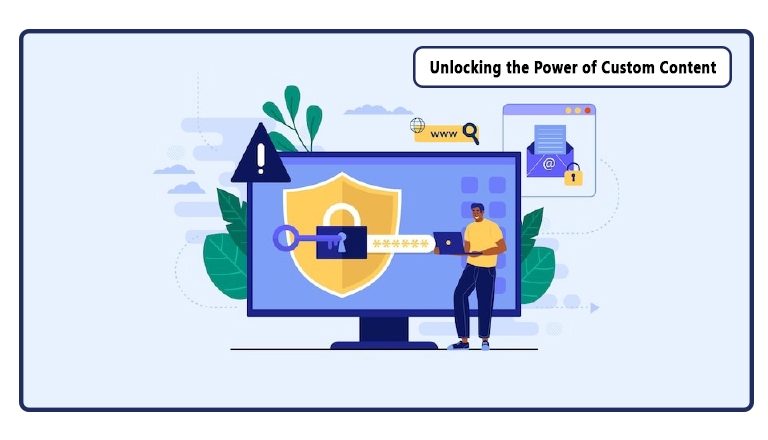Since its inception in 1999, e-learning has experienced exponential growth, expanding by a staggering 900% over the past two decades. Today, it’s a cornerstone of organizational training, with a notable 40% of Fortune 500 companies integrating e-learning into their corporate learning and development programs. The allure lies in its potential to reduce costs while simultaneously enhancing learning retention—making e-learning an indispensable component of organizational training.
However, not all e-learning solutions are created equal. Amidst the vast array of options, there exists a transformative approach: custom content. In this article, we delve into the world of custom content, exploring its myriad benefits and the diverse types available. Whether you’re a seasoned learning professional or just embarking on your organizational e-learning journey, understanding custom content is essential for maximizing the impact of your training initiatives.
What is Custom Content?
In the realm of e-learning, the term “custom content” holds immense significance. It refers to learning programs specifically crafted or customized for your organization. On the other end of the spectrum lies “off-the-shelf content,” which has its own merits. However, custom content offers unique advantages that off-the-shelf solutions cannot match.

Benefits of Custom Content Solutions
Being tailored to your organization, custom content solutions provide you with a unique list of benefits you would not want to miss out on.
- Laser-Focused Learning
Custom content is like a bespoke suit tailored to fit your organization perfectly. Unlike generic off-the-shelf solutions, which may include irrelevant material, custom content zeroes in on your specific learning objectives. It’s designed with precision, ensuring that every piece aligns with your organizational goals. As a result, learners benefit from content that is relevant, concise, objective-focused, time saving, and directly applicable to their roles.
- Organization-Specific Relevance
Imagine attending a training session where the examples and case studies are drawn from your own workplace. That’s the power of custom content. Unlike off-the-shelf solutions, which offer generic scenarios, custom content allows you to incorporate real-life situations from your organization. Whether it’s industry-specific processes, company culture, or unique challenges, learners engage more deeply when they see familiar contexts. This relevance boosts attention, retention, and ultimately drives behavioural change on the job.
- Addressing Specific Use Cases
Custom content shines brightest in specific scenarios where organization-specific knowledge is needed. While off-the-shelf learning materials can upskill employees, they fall short when it comes to conveying your company’s core values or fostering awareness of organizational culture. These are precisely the situations where custom content excels. Whether it’s introducing new policies, explaining intricate processes, or reinforcing ethical guidelines, custom content ensures that your message resonates authentically with your organization.
To In-House or To Out-Source?
As organizations embrace e-learning, a pivotal question arises: Should we build an in-house team of custom content developers or entrust the task to external experts? The decision carries significant implications, and understanding the key factors is essential.
1. Workload Considerations
- In-House Developers: If your content demands are substantial—multiple programs per year, intricate modules, and frequent updates—an in-house developer may be the right choice. Their dedicated focus ensures alignment with your organization’s unique needs.
- Outsourcing: For sporadic content requirements or uncertain workloads, outsourcing offers flexibility. Start small, gauge demand, and scale accordingly. Consider external providers when the workload doesn’t warrant a full-time hire.
2. Cost Analysis
- Outsourced Development Cost: Crafting tailored content involves expenses, from design to implementation. Compare this against the cost of the full-time hire alternative.
- Full-Time Employee Cost: Weigh the cost of hiring an in-house developer against outsourcing. Consider factors like salaries, benefits, and overhead. It all depends on the estimated workload.
3. Time Efficiency
- In-House Advantage: Having an exclusive in-house developer seems efficient, but it doesn’t always translate to faster turnarounds. Complex projects may still take time.
- Outsourcing Team Advantage: Outsourcing grants access to a diverse team. Multiple developers can collaborate simultaneously, accelerating project completion.
4. Expertise Dilemma
- Outsourced Expertise: External developers often bring specialized skills and broader industry exposure. Their fresh perspectives enhance content quality.
- In-House Insight: Your internal team knows your organization intimately—its culture, processes, and unique challenges. This context helps especially with programs that require insights into the organization’s unique knowledge and culture.
There is no right answer to the in-house vs. outsourcing question. The decision hinges on your organization’s specific context. Prioritize factors like workload, cost, time, and expertise, and make the decision that aligns best with your learning programs’ goals.

Types of Custom Content
As you navigate the decision between in-house development and outsourcing for custom content, understanding the diverse types of content becomes crucial. Each type serves specific learning needs, ensuring a tailored approach to your organization’s training programs.
- Whiteboard Explainer Videos
Whiteboard explainer videos are videos that mimic the experience of a teacher explaining on a whiteboard but in a video format. These videos are ideal for explaining concepts especially ones that include branching and mind mapping.
- Animated Videos
These are videos that create stories by presenting characters and scenes. They leverage storytelling as a learning technique and represent audio-visual content in a concise and compelling manner. They are ideal for conveying concepts in action, real-life scenarios, and case studies. Most importantly, they are an excellent format for learning that sticks!
- Infographic Animated Videos
Infographic videos are motion graphic videos that are highly packed with facts, data, numbers, charts, and all other kinds of statistics. They are an ideal choice if you are aiming to explain, educate, or inform your learners of concepts that rely heavily on information.
- Kinetic Typography Videos
These are videos that feature words but with a touch of typography art, exquisite use of colour and movement, and a coupling of proper music and voiceover. These videos are ideal for conveying value-related behaviours, principles, or any set of rules or procedures you would like to disseminate.
- Page Turners
Page-turners are simple self-paced online programs that feature a linear sequence of slides the learner can go back and forth through. They are ideal for basic information transfer and for communicating simple and straightforward concepts. Page turners are commonly used for organization-wide mandatory programs.
- Rapidly Authored Programs
This is a super-quick solution for your immediate training needs. If you already have an impressive library of training programs in slide format, with rapid authoring, you can transform your conventional but informative slides into digital programs that help you make the transition to e-learning fast. They are ideal if you want to build on what you already have and want quick results.
Get Custom Content Solutions for Your Organization
Custom content isn’t just about creating learning materials; it’s about crafting experiences. By tailoring content to your organization’s unique context, you empower learners to thrive. If you’re interested in learning more about how custom content can help your organization or are interested in viewing a live demo, you can visit our custom content page.

